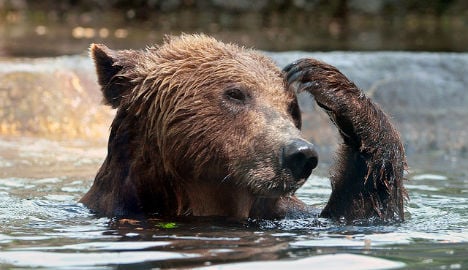Norwegian Nature Surveillance (NNS) has launched the scheme as part of its efforts to estimate the size of Norway's brown bear population.
“We ask everyone who is out in nature this autumn to pick up excrement and hair from bears and deliver it to NNS in the area,” said Jonas Kindberg, head of Rovdata, which is responsible for gathering data for NNS told the local Altaposten newspaper. “Combine outdoor life this autumn with a little bear poo picking.”
According to Kindberg, samples sent in by the public have long contributed to NNS's surveys.
“Poo and hair samples are mainly collected by NNS, but also by hikers, berry pickers, hunters and others who are in nature,” he told Namdalsavisa. “We analyse the samples and learn more about the bear and how many live in the country.”
The brown bear is an endangered species in Norway, with only 136 animals, 54 females and 82 males, identified in the 2014 census.
Norway now allows the brown bear to thrive in certain areas, where the risk of bear-human conflict is low.
The NNS has collected bear poo in nature for several years, sometimes with the assistance of local berry pickers and hunters. The collection has has improved data on the number of individuals present in the wild.
Kindberg advises the public not to touch bear poo directly, but not for the obvious reasons.
“For us to be able to get DNA samples, it's important that it is not contaminated and contains DNA other than the bear's. Therefore, avoid touching the poo. Use an inside out plastic bag to pick up some of the poo.”
So that the excrement reaches NNS in good condition, Kindberg also suggests freezing the poo as soon as possible.
The NNS now hope that the remaining bears will breed, with at least 13 litters being born every year. Last year however, only 6 litters were born.



 Please whitelist us to continue reading.
Please whitelist us to continue reading.